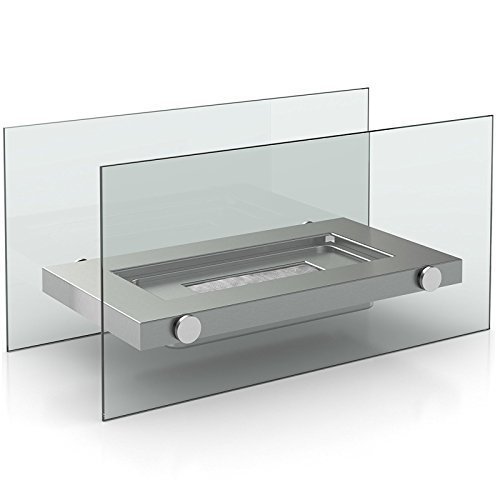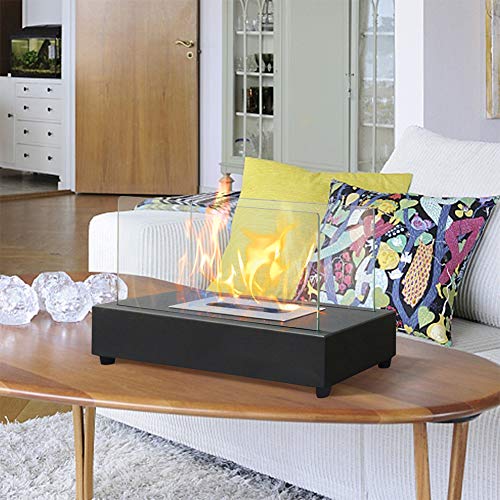ethanol fireplace fuel For Fireplaces
Ethanol Fireplaces are a modern environmentally friendly and stylish method to warm your home. They produce steam, water and tiny amounts CO2 when they burn bioethanol fireplace log burner. They don't release odours or toxic gases such as carbon monoxide, acrolein and benzene.
 The ethanol flames, unlike wood biofuel fires that consume oxygen, must be placed in a space with the right size to ensure their continued existence. This will prevent them from burning any material surrounding them.
The ethanol flames, unlike wood biofuel fires that consume oxygen, must be placed in a space with the right size to ensure their continued existence. This will prevent them from burning any material surrounding them.
Vent-free
Ethanol fireplaces are vent-free decorative appliances that use ethanol fuel to operate. Biofuels are derived from the fermentation process of various crops and is renewable. It can be made from waste products and forestry byproducts. It is not just eco-friendly however, it is cost effective and safe to use. The main advantage of using Ethanol fireplaces is that they emit very little carbon dioxide and smoke. They can also be utilized in areas where a chimney may not be constructed.
Another advantage of fireplaces that burn ethanol is that they're easy to set up and operate. Pour the ethanol into the burner pan and then ignite it. To do this, you can make use of a long matchstick, or lighter. After the flame is ignited, you can move it to wherever you'd like. It can be a freestanding design, wall mounted fireplace, or even a table top.
There is no need to connect gas lines to fireplaces that use ethanol, which makes them safer to use. They are safe to use, apart from the fact that they do not pose a danger of carbon monoxide poisoning. It is important to remember that a bio fuel fireplaces-ethanol fireplace is not recommended in homes with seals that are tight or small spaces because the flammable liquid could escape and cause fire to the structure.
It is recommended to set up a ethanol fireplace with no vents in an open area and ensure it is kept clear of materials that could ignite. In case an emergency arises it is recommended you keep a fire extinguisher to. It is also advisable to open the windows in the area where an ethanol fireplace is running, to prevent a buildup of carbon monoxide fumes.
It is important to read and adhere to all instructions and warnings from the manufacturer when using an ethanol-based fire. It is also a good idea to keep an eye on the fuel tank and to not overfill it. To prevent spilling liquid, it's an ideal idea to employ a lighter with a longer length. It is also a good idea to allow the burner to cool completely prior to refilling with fuel.
Easy to install
Ethanol Fireplaces are simple to set up and can be incorporated into any space. The ethanol fireplaces that are mounted on walls come with modern and sleek frames. They can be flush mounted or installed into walls. They are easy to maintain and clean and do not require chimney or gas. The process of installation is similar to the traditional wood burning fireplace, with certain differences. Most ethanol fireplaces come with brackets you'll need to install the unit in your home, along with instructions on how to position them.
There are also a variety of different styles of fireplaces that can suit your personal preference, from contemporary to traditional designs. It is important that the fireplace you choose fits in your home and meets all safety standards applicable to it. If you're not sure about which one to choose ask a professional before buying.
As opposed to a gas or wood fireplace, an ethanol fire doesn't require a flue to vent out toxic fumes. To avoid carbon monoxide poisoning or fires ensure that the ethanol fireplace is properly wired and has a layout that's been approved. It is important to keep in mind that bio-ethanol fireplaces do not generate a lot of heat, which is why they should not be used as primary heating sources.
While ethanol fireplaces are straightforward to set up and operate, they must always be operated in a safe way. You should never put the fireplace in proximity to objects that are flammable or any other items that could ignite. In addition, you should keep it away from children and pets to prevent accidental burns or injuries.
An ethanol fireplace doesn't produce a lot of heat and is best utilized as a decorative feature in your home. It is an ideal choice for those with limited space. Additionally, it does not create harmful pollutants that could cause respiratory harm to people suffering from allergies or other health problems.
While ethanol fireplaces are very simple to use, it's essential to take all safety precautions when using them. In addition, you should make use of bio-ethanol liquid fuel specifically designed for the fireplace. Follow the steps on how to add fuel and extinguish the flame. It is crucial to make sure that the burner has cooled completely before removing it.
Energy efficient
Ethanol fireplaces can be a wonderful alternative to wood-burning fireplaces, since they don't emit dangerous carbon monoxide or harmful fumes which must be vented outdoors. They are also simple to use and require little maintenance, making them a great choice for those who are concerned with the environmental impact. They can be used both outdoors and indoors, and some models even come with built in bioethanol fireplace-in tabletop grills that are suitable for outdoor use.
They are also simple to install. They can be put on any surface and do not need to be connected to a chimney or venting system. They can be moved from room to room. This is ideal when you reside in a rental property or apartment where adding a fire place could be difficult or impossible.
When you use an ethanol fireplace, make sure to follow the guidelines that come in the particular appliance. You should generally fill the burner to the point that you can see it, and only use ethanol that has been designed specifically for these fireplaces. Use a long lighter light the fuel. Once the flame is lit, you can adjust the size of the flame using the regulator rod that is included in your unit. One liter of fuel will last approximately 4 hours, depending on the amount you alter the flame.
While ethanol fireplaces are a great addition to any house however, they shouldn't be used as the main source of heat. Bio-ethanol fireplaces consume oxygen and should therefore be used in a well-ventilated area to prevent overheating. Open a window or a door to let fresh air in when the fireplace is turned on.
Freestanding Ethanol fireplaces are an excellent option for people who live in buildings or apartments with strict guidelines or restrictions on the use of firewood. They can be used as a decorative feature and are a simple way to add warmth to your home. A lot of them are portable which means they can be moved from room to room.
Eco-friendly
Ethanol fuelled fireplaces are a green method of bringing warmth and ambiance to your home. They provide a clean burning flame that doesn't leave any residue or soot on the floor, and are easy to maintain. Simply wipe them down occasionally and ensure they are full of fuel and you'll be able enjoy your fireplace for many years to be. You can also find Ethanol fireplaces that come in a wide variety of sizes and styles, so you're sure to find one that fits your style.
Ethanol fireplaces are simple to install, and most come with step-bystep instructions that help you through the installation process. There are also freestanding models that are portable and can be moved from room to room without any issues. Some models are capable of being hung on the wall, and are a great option for homes with a limited space for floor.
The fact that ethanol fireplaces are safer than wood-burning fire places is an additional benefit. They emit very little smoke, and are completely ventless, meaning that they do not draw in air from outside. They are a great option for pet owners or children at home. It is important to keep in mind that ethanol fireplaces are only suitable to be used in rooms with adequate ventilation.
It is important to know that it isn't safe to add fuel to a bioethanol fire while it is burning or when the burner is heated. The liquid could escape from the burner, causing burns or injuries. Avoid smoking in the room near the fireplace, or in close proximity to it. It is also recommended to keep a carbon-monoxide detector close to.
When using a bioethanol fireplace it is essential to follow the manufacturer's guidelines carefully. This will ensure that you are making use of the appliance properly and safely, so you won't risk injuries or even harming yourself. It is also essential to place the appliance in a ventilated space that is large enough, so that any emissions are dispersed.
